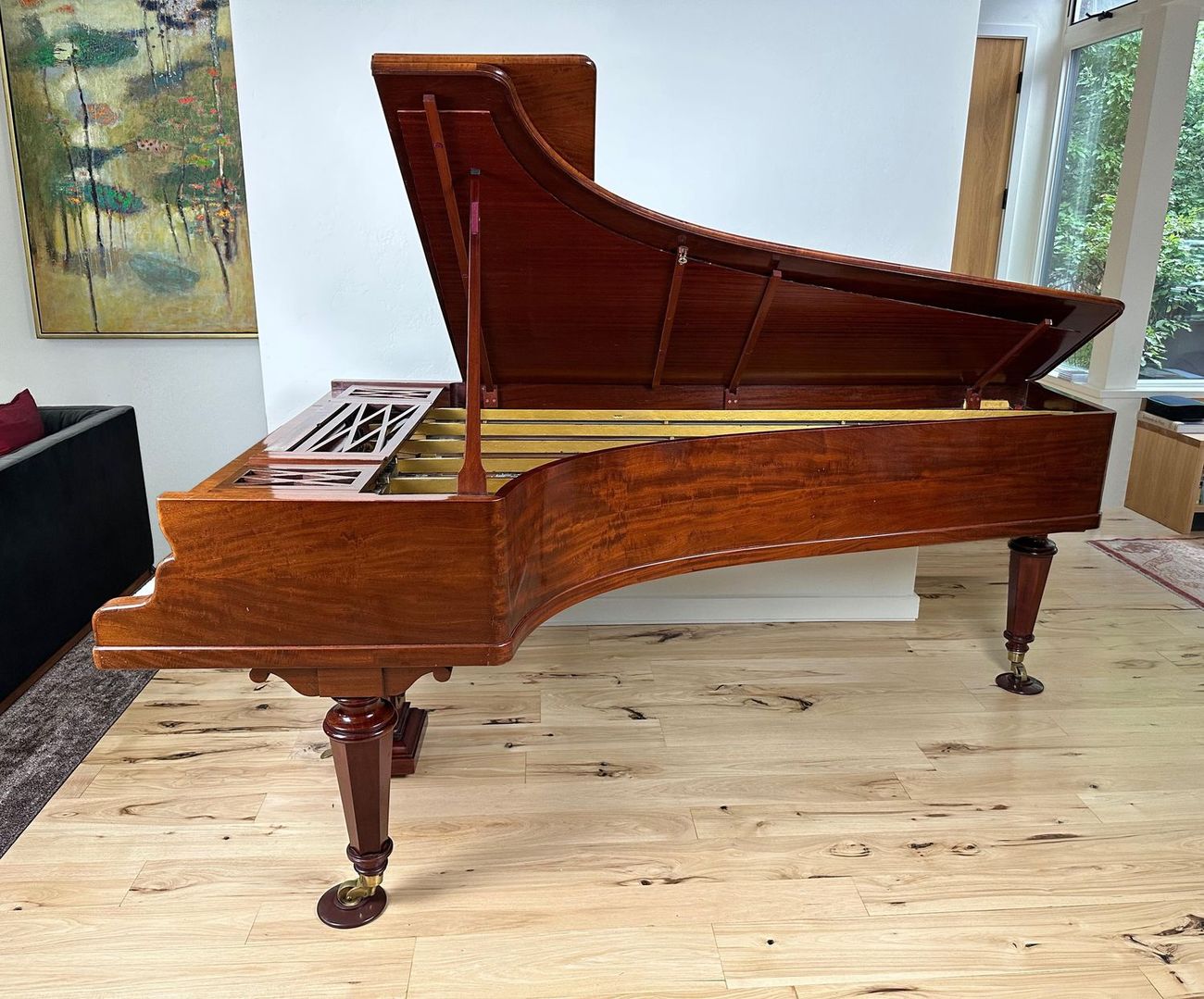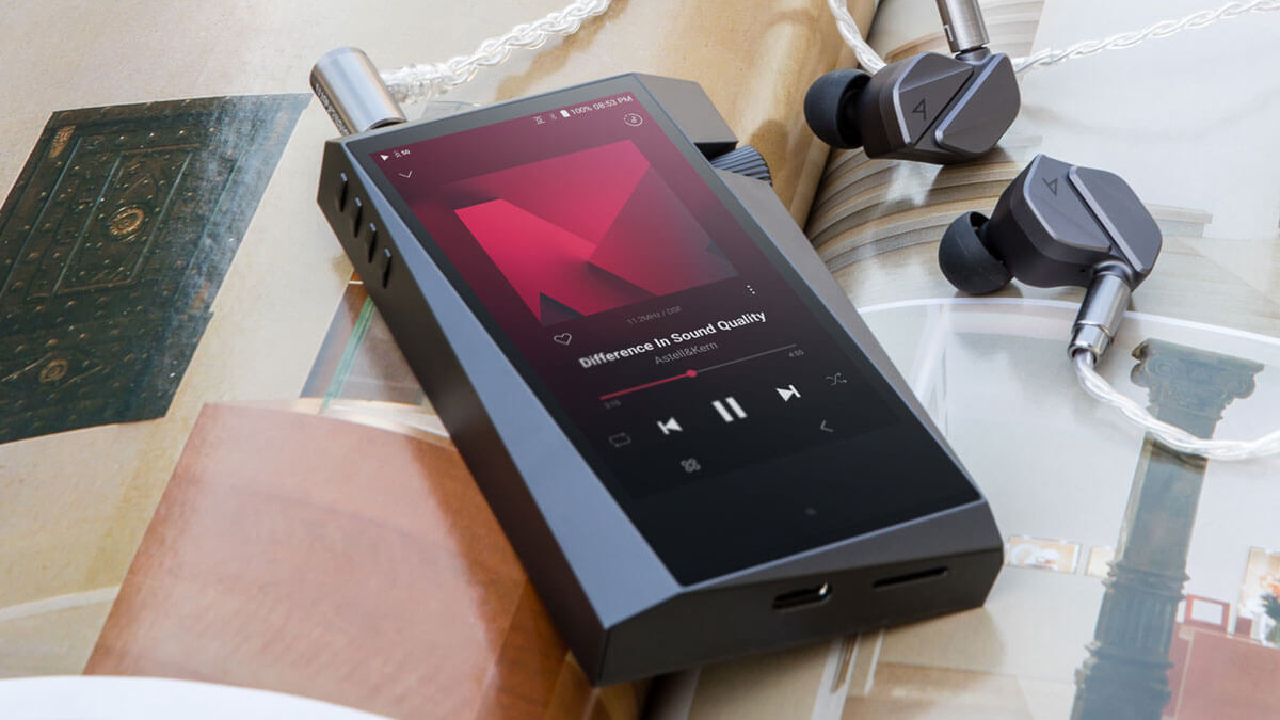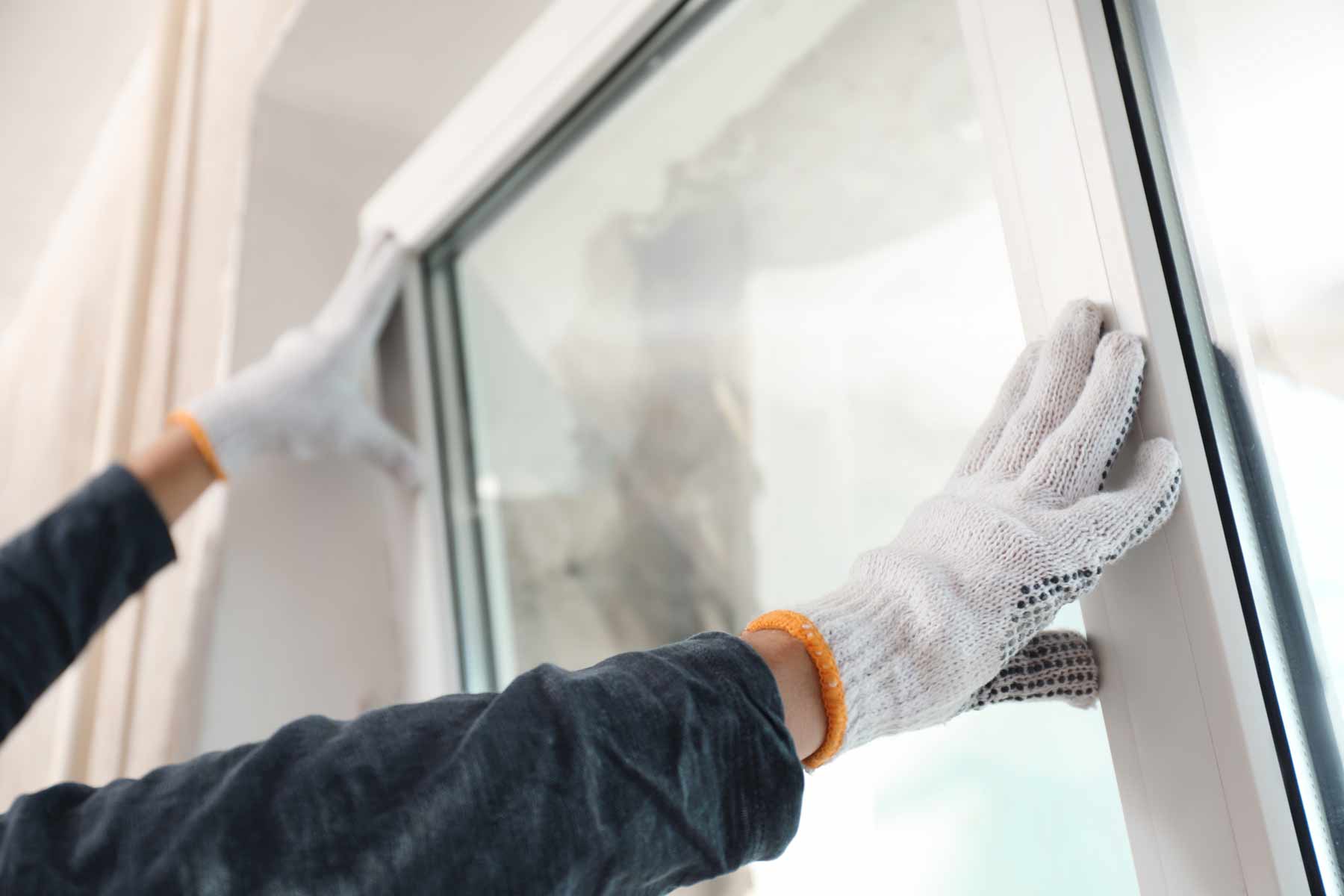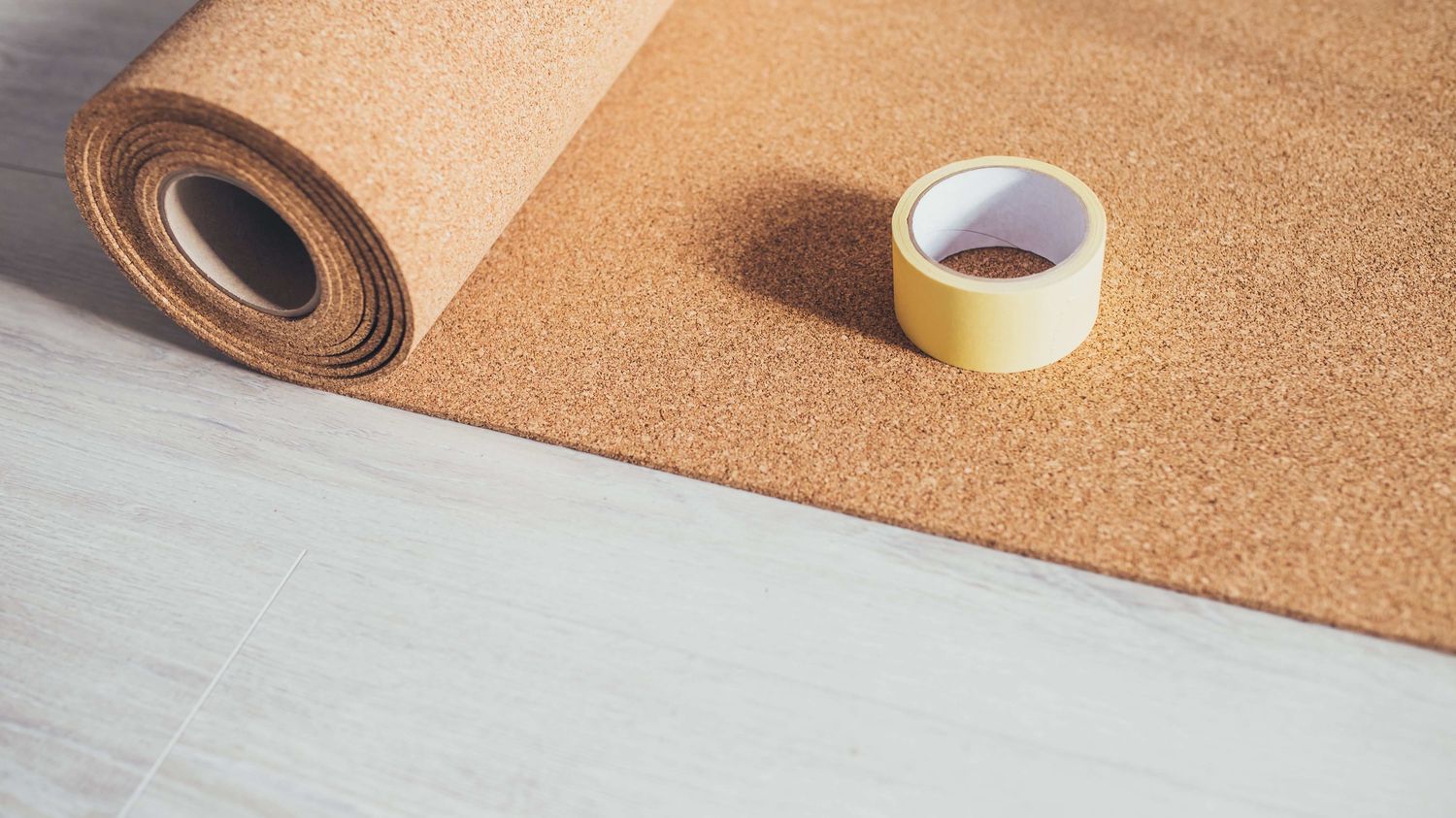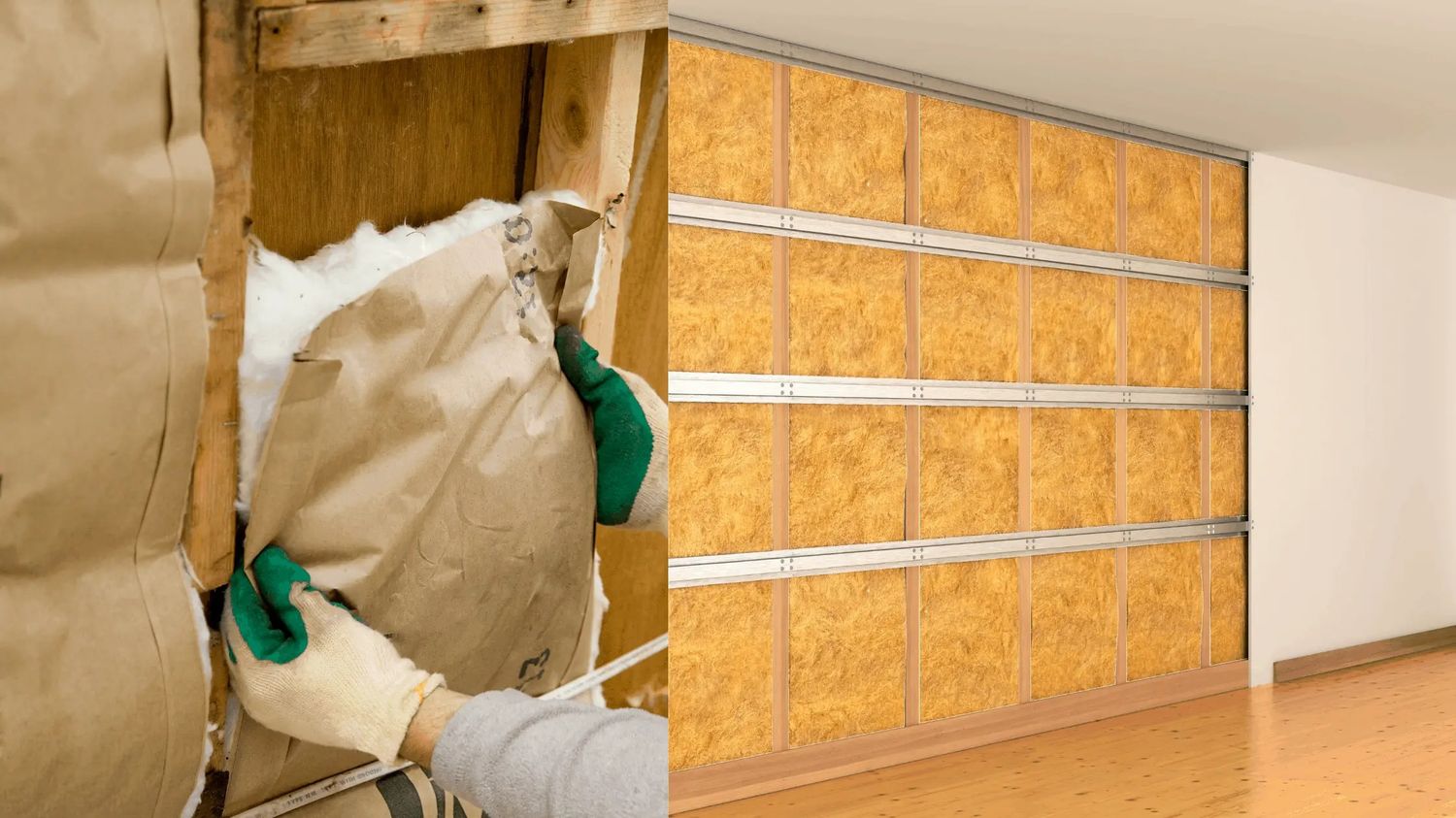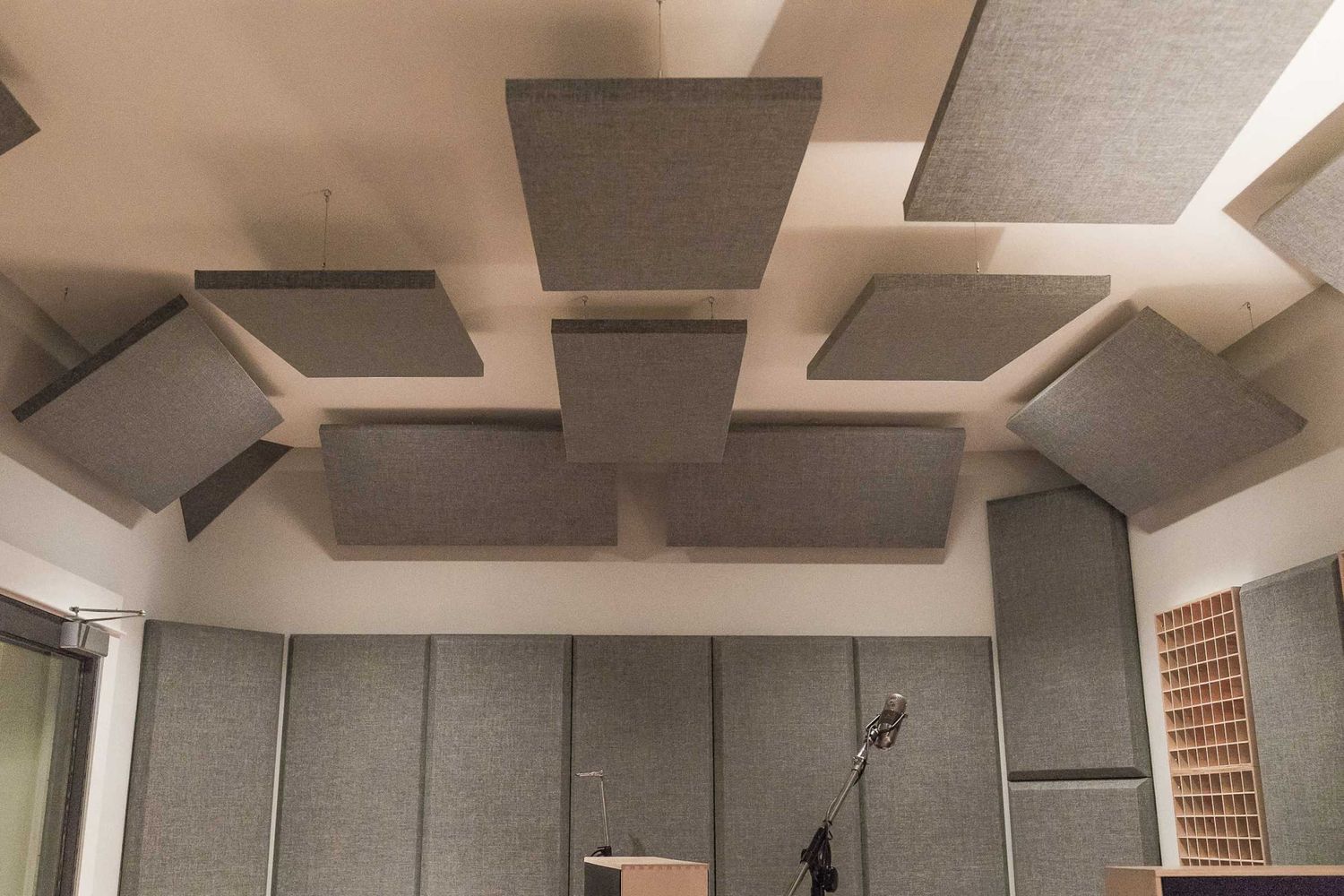Home>Production & Technology>Soundproofing>How Expensive Is Soundproofing
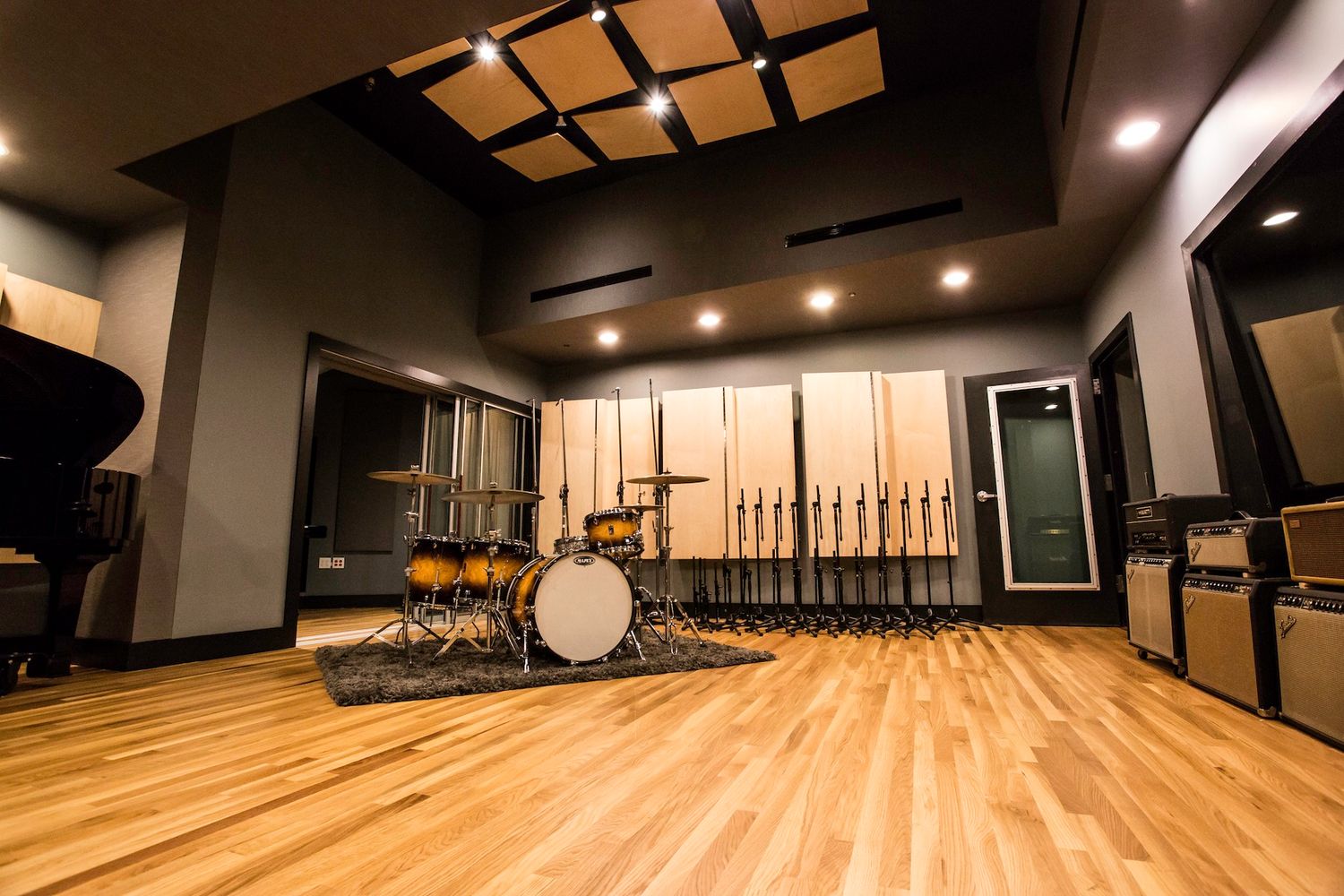

Soundproofing
How Expensive Is Soundproofing
Published: January 26, 2024
Find out how expensive soundproofing can be and discover if it's worth the investment. Enhance your peace and quiet with effective soundproofing solutions.
(Many of the links in this article redirect to a specific reviewed product. Your purchase of these products through affiliate links helps to generate commission for AudioLover.com, at no extra cost. Learn more)
Table of Contents
- Introduction:
- Factors Affecting the Cost of Soundproofing:
- Soundproofing Materials:
- Room Size and Layout:
- Type of Soundproofing Technique Used:
- Professional Installation vs. DIY:
- Additional Features or Equipment:
- Cost Breakdown of Soundproofing Methods:
- Wall Soundproofing:
- Floor Soundproofing:
- Ceiling Soundproofing:
- Window and Door Soundproofing:
- Soundproofing a Home Theater:
- Conclusion:
Introduction:
Soundproofing is a vital consideration for anyone who values peace, privacy, and uninterrupted tranquility in their living or working spaces. Whether you’re dealing with noisy neighbors, street traffic, or loud appliances, soundproofing can help create a peaceful oasis by reducing or eliminating unwanted noise. However, one common concern that arises when considering soundproofing is the cost involved.
While soundproofing can indeed be an investment, the benefits it provides make it well worth the expense for many individuals. It not only improves the quality of your daily life but also adds value to your property. In this article, we will explore the factors that affect the cost of soundproofing and provide a breakdown of the expenses associated with various soundproofing methods.
Before delving into the specifics, it’s important to note that the cost of soundproofing will vary depending on several factors. These factors include the size of the space being soundproofed, the materials used, the techniques employed, and whether you choose to hire professionals or opt for a do-it-yourself (DIY) approach. By understanding these factors, you can make informed decisions about which soundproofing methods are best suited to your needs and budget.
Whether you want to soundproof a single room, an entire house, or a commercial space, knowing the potential costs involved will help you plan and budget accordingly. So, let’s dive into the factors that affect the cost of soundproofing and explore the different techniques and methods available to create a quieter and more peaceful environment.
Factors Affecting the Cost of Soundproofing:
The cost of soundproofing can vary significantly based on several factors. Understanding these factors will help you estimate the overall expense and determine the most suitable soundproofing options for your needs:
- Soundproofing Materials: The type and quality of soundproofing materials you choose will greatly impact the cost. There are various options available, including acoustic panels, insulation, soundproof curtains, and acoustic foam. High-quality materials often come at a higher price but provide better sound insulation.
- Room Size and Layout: The size of the space being soundproofed will affect the total cost. Larger rooms require more materials and labor, increasing the overall expense. Additionally, the layout of the room, such as the number of walls, windows, and doors, will influence the complexity of the soundproofing process.
- Type of Soundproofing Technique Used: There are different techniques for soundproofing, such as decoupling, adding mass, damping, and absorption. Each technique comes with its own costs. Decoupling, which involves creating an air gap between surfaces, may require additional construction work, while adding mass through double-layered drywall can increase material costs.
- Professional Installation vs. DIY: Deciding whether to hire professionals or take a DIY approach will impact the overall cost. While hiring professionals ensures expertise and efficiency, it comes with additional labor fees. On the other hand, DIY projects may save money on labor costs, but you need to consider your own skills, time commitment, and potential need for tools or equipment.
- Additional Features or Equipment: The inclusion of additional features, such as soundproof windows or doors, as well as specialized equipment like soundproofing caulk or sealants, will add to the overall cost. These features and equipment can enhance the effectiveness of soundproofing but also increase the expense.
It’s important to note that while cost is a significant factor, the quality and effectiveness of soundproofing should not be compromised. Investing in high-quality materials and techniques will provide long-term benefits and ensure a more peaceful and insulated space.
Now that we’ve explored the key factors influencing the cost of soundproofing, let’s delve into the specific cost breakdown of various soundproofing methods. This breakdown will give you a clearer understanding of the potential expenses involved in soundproofing different areas of your space.
Soundproofing Materials:
Choosing the right soundproofing materials is crucial for effective noise reduction. Here are some commonly used materials and their associated costs:
- Acoustic Panels: Acoustic panels are one of the most popular soundproofing materials. They are designed to absorb sound waves, reducing echo and reverberation. The cost of acoustic panels can vary depending on the size, quality, and brand, but you can expect to pay around $50 to $200 per panel.
- Insulation Materials: Insulation plays a vital role in soundproofing, especially for walls and ceilings. Materials such as mineral wool or fiberglass insulation provide excellent sound absorption. The cost may range from $0.50 to $2 per square foot, depending on the thickness and quality of the insulation.
- Soundproof Curtains: Soundproof curtains are a convenient and cost-effective option to reduce external noise. These curtains are made from heavy-duty materials with sound-dampening properties. The price of soundproof curtains can vary based on the size and quality, ranging from $50 to $150 per curtain panel.
- Acoustic Foam: Acoustic foam is commonly used to reduce echo and improve sound quality in recording studios or home theaters. The cost of acoustic foam depends on the thickness, size, and type of foam used, with prices ranging from $10 to $50 per square foot.
- Green Glue: Green Glue is a specialized soundproofing compound used to dampen vibrations and reduce noise transmission. It is typically applied between layers of drywall or other building materials. The cost of Green Glue is around $15 to $20 per tube, and the amount required will depend on the project size.
Keep in mind that the quantity of materials required will depend on the size of the area being soundproofed. It’s recommended to consult with soundproofing professionals or suppliers to determine the exact quantity and type of materials needed for your specific project. Additionally, you may also need other accessories such as adhesive, tape, or sealants, which will add to the overall material cost.
Now that we have covered the soundproofing materials, let’s move on to exploring other factors affecting the cost of soundproofing, such as room size, layout, and the type of soundproofing techniques used.
Room Size and Layout:
The size and layout of the room play a significant role in determining the cost of soundproofing. Here are some factors to consider:
1. Square Footage: The larger the room, the more materials and labor will be required for effective soundproofing. The cost of materials will increase proportionally with the square footage of the space.
2. Walls, Ceilings, and Floors: The number of surfaces to be soundproofed also affects the total cost. For instance, a room with multiple walls, ceilings, and floors will require more materials and work compared to a small space with only one wall.
3. Architectural Features: Unique architectural features, such as curved walls, recessed areas, or vaulted ceilings, can add complexity to the soundproofing process. Customizing soundproofing solutions to fit these features may increase the overall cost.
4. Accessibility: Accessibility to the room can impact the cost, especially if it requires special equipment or additional labor. For example, if soundproofing a room on the upper floor of a building with no elevator access, the transportation of materials may incur additional charges.
It’s important to assess the size and layout of the room before determining the quantity of soundproofing materials needed. Consultation with professionals or contractors can help provide accurate measurements and cost estimates for your specific space.
Now that we’ve explored the impact of room size and layout on soundproofing costs, let’s move on to discuss the different types of soundproofing techniques and how they can affect the overall expenses.
Type of Soundproofing Technique Used:
The soundproofing technique you choose will significantly influence the overall cost of your project. Here are some commonly used techniques and their associated expenses:
1. Decoupling: Decoupling involves creating an air gap between surfaces to minimize sound transmission. This technique often requires additional construction work, such as installing resilient channels or Sound Transmission Class (STC) rated walls. The cost of decoupling can vary depending on the size of the space and the complexity of the construction involved.
2. Adding Mass: Adding mass to walls, ceilings, or floors is an effective way to reduce sound transfer. This technique typically involves using materials like double-layered drywall, mass-loaded vinyl, or concrete boards. The cost of materials and labor for adding mass will depend on the size of the area being soundproofed.
3. Damping: Damping involves using materials that convert sound energy into heat, thereby reducing noise transmission. One popular damping material is Green Glue, which is applied between layers of drywall or other surfaces. The cost of damping can vary based on the quantity of damping material required and the specific brand used.
4. Absorption: Absorption is a technique used to reduce echo and reverberation within a room. It involves the use of acoustic panels, foam, or other materials that absorb sound waves. The cost of absorption techniques will depend on the quantity and quality of the absorption materials chosen.
It’s important to consider the specific needs of your space when choosing a soundproofing technique. While some techniques may be more expensive initially, they can provide long-term benefits and better sound insulation.
Consultation with soundproofing professionals or contractors can help determine the most suitable technique for your space and provide accurate cost estimates based on your specific requirements.
Now that we’ve explored the impact of soundproofing techniques on the cost, let’s move on to discuss the choice between professional installation and a DIY approach.
Professional Installation vs. DIY:
When it comes to soundproofing, you have the option of hiring professionals or taking a do-it-yourself (DIY) approach. Each choice has its advantages and considerations that can affect the overall cost:
Professional Installation:
Hiring professionals for your soundproofing project offers expertise and ensures that the job is done efficiently and effectively. Here are some factors to consider when calculating the cost of professional installation:
- Labor Costs: Professional installers charge for their services, which can vary based on factors such as experience, location, and the complexity of the project. Labor costs can be a significant portion of the overall soundproofing expense.
- Materials and Equipment: Professional installers usually have access to discounted materials and specialized equipment, which can result in cost savings. They can help you choose the right materials and ensure their proper installation.
- Efficiency and Quality: Professionals have the knowledge and experience to complete the soundproofing project efficiently while achieving the desired results. Their expertise can minimize errors and the need for costly rework.
DIY Approach:
Opting for a DIY soundproofing project can help save on labor costs, but it also requires careful planning and execution. Here are some factors to consider when estimating costs for a DIY approach:
- Materials: Purchasing soundproofing materials directly can be more affordable compared to buying them through professional installers. However, it’s crucial to ensure you select high-quality materials that suit your specific needs.
- Tools and Equipment: Depending on the complexity of the project, you may need to invest in tools and equipment, such as drills, saws, or measuring devices. Factoring in these additional costs is essential for an accurate estimation.
- Skill and Time: DIY projects require a certain level of skill and knowledge. If you have the expertise and time to dedicate to the project, undertaking a DIY approach can be cost-effective. However, consider the learning curve and potential mistakes that could result in additional expenses.
Choosing between professional installation and a DIY approach depends on your budget, skill level, and the complexity of the project. It’s advisable to consult with professionals for guidance and cost estimates, even if you decide to pursue a DIY project.
Now that we’ve explored the option of professional installation versus a DIY approach, let’s move on to discuss additional features or equipment that can impact the overall cost of soundproofing.
Additional Features or Equipment:
When soundproofing a space, there are additional features and equipment that can enhance the effectiveness of the soundproofing measures. However, it’s important to consider their associated costs in your budget. Here are some factors to keep in mind:
1. Soundproof Windows and Doors:
Windows and doors are common sources of noise transmission. Installing soundproof windows or doors can significantly reduce external noise infiltration. However, they tend to be more expensive compared to standard windows and doors due to their specialized design and materials.
2. Sealing and Caulking:
Proper sealing and caulking can help minimize sound leakage around windows, doors, and other potential points of entry. This additional step ensures a more airtight and soundproof environment, but it may require investing in specialized sealants or caulking materials.
3. Soundproofing Equipment:
In some cases, soundproofing may require the use of specialized equipment, such as soundproof curtains, acoustic seals, or soundproofing foam. These equipment options should be considered in your budget, as their costs can vary based on quality and quantity required.
4. Acoustic Treatments:
Acoustic treatments can enhance the sound quality within a room by reducing echoes, reverberations, and unwanted reflections. This may include the use of diffusers, bass traps, or absorbers. Acoustic treatments can be a valuable addition to your soundproofing project but can incur additional expenses.
It’s important to carefully assess the necessity and financial implications of these additional features and equipment. Prioritize areas that require the most soundproofing attention and consider consulting with professionals to determine the most cost-effective solutions for your specific needs.
With an understanding of the potential expenses associated with additional features and equipment, we’ve now covered the main factors affecting the cost of soundproofing. Let’s move on to break down the cost of different soundproofing methods in the next section.
Cost Breakdown of Soundproofing Methods:
Soundproofing methods can vary depending on the area being treated and the specific needs of the space. Here, we will provide a cost breakdown for various common soundproofing methods:
1. Wall Soundproofing:
The cost of soundproofing walls will depend on the technique used. Adding mass with double-layered drywall can range from $1 to $3 per square foot, excluding labor costs. Decoupling with resilient channels or STC-rated walls can increase the expense due to additional construction work.
2. Floor Soundproofing:
To soundproof floors, options include adding underlayment materials, mass-loaded vinyl, or soundproofing mats. Costs can range from $1.50 to $5 per square foot, depending on the material chosen and the complexity of installation.
3. Ceiling Soundproofing:
Ceiling soundproofing techniques may involve adding mass, decoupling, or using acoustic panels. Costs can range from $2 to $8 per square foot, depending on the materials and methods employed.
4. Window and Door Soundproofing:
Soundproofing windows and doors can involve installing double or triple-pane windows or using soundproofing seals or curtains. Costs can range from $200 to $1,000 per window or door, depending on the size and quality of the materials chosen.
5. Soundproofing a Home Theater:
Creating a soundproof home theater may include a combination of wall treatments, acoustic panels, floor underlayment, and specialized equipment. Costs can vary widely based on the size of the space, equipment requirements, and desired audio quality.
It’s important to note that these cost breakdowns are general estimates and can vary significantly based on factors such as the size of the area, material quality, labor costs, and geographical location. Obtaining multiple quotes and consulting with professionals will help provide more accurate cost estimates for your specific project.
By understanding the potential expenses associated with different soundproofing methods, you can make informed decisions about which techniques align with your budget and requirements.
Now that we’ve covered the cost breakdown of various soundproofing methods, let’s conclude our discussion on soundproofing expenses.
Wall Soundproofing:
When it comes to soundproofing, walls are one of the most important areas to address. Soundproofing walls can significantly reduce the transfer of noise from outside or between rooms. Here, we will provide an overview of the cost considerations for wall soundproofing methods:
1. Adding Mass:
One common approach to soundproofing walls is by adding mass. This can be achieved by using double-layered drywall or other mass-loaded materials. The cost of adding mass to walls can range from $1 to $3 per square foot, depending on the quality and thickness of the materials chosen. However, it’s important to factor in additional expenses for labor if professional installation is required.
2. Decoupling:
Decoupling involves creating an air gap between the existing wall and a new layer of drywall. This technique helps prevent sound vibrations from easily transferring through the wall. Decoupling walls typically require the use of resilient channels or specialized soundproofing systems. The cost for decoupling can vary based on the size of the area and the complexity of the construction involved. It’s advisable to consult with professionals for accurate estimates.
3. Soundproof Insulation:
Installing soundproof insulation within the wall cavities can further enhance soundproofing effectiveness. Materials such as mineral wool or fiberglass insulation provide excellent sound absorption. The cost of soundproof insulation can range from $0.50 to $2 per square foot, depending on the thickness and quality of the insulation chosen.
Keep in mind that the total cost of wall soundproofing will depend on factors such as the size of the wall, the number of walls being soundproofed, the choice of materials, and whether professional installation is required. Obtaining quotes from soundproofing specialists will help determine the most accurate cost estimate for your specific project.
Remember, while costs are an important consideration, it’s essential to prioritize the quality and effectiveness of the soundproofing methods. Investing in high-quality materials and professional installation, if necessary, will provide long-term benefits and ensure a quieter and more peaceful living or working environment.
Now that we have discussed the cost considerations for wall soundproofing, let’s move on to explore soundproofing techniques for other areas, such as floors and ceilings.
Floor Soundproofing:
Soundproofing floors is crucial to minimize noise transmission between different levels of a building or to reduce impact noise caused by footsteps or objects dropping. Here, we will discuss the cost factors to consider when soundproofing floors:
1. Underlayment Materials:
Using underlayment materials is a common approach to soundproofing floors. This involves installing a layer of material between the subfloor and the finished flooring. Materials such as cork, rubber, or acoustic foam underlayment can absorb impact noise and vibrations. The cost of underlayment materials can range from $1.50 to $5 per square foot, depending on the type and quality chosen.
2. Mass-Loaded Vinyl (MLV):
Mass-loaded vinyl is a dense and flexible material that can be installed beneath the flooring to add mass and reduce sound transmission. MLV typically costs around $2 to $4 per square foot, excluding installation fees. It’s important to ensure proper installation, as seams and gaps can compromise its effectiveness.
3. Carpet and Padding:
Carpeting with a thick pile and high-density padding can provide effective sound insulation for floors. The cost of carpeting and padding can vary based on the type, quality, and square footage needed. The average cost can range from $2 to $7 per square foot, including both materials and installation.
4. Floating Floor System:
A floating floor system involves placing a sound-isolating underlayment beneath a new layer of flooring, such as laminate or engineered hardwood. This technique helps to reduce the transfer of impact noise. The cost of a floating floor system can vary depending on the type of flooring material chosen and the size of the area being soundproofed.
It’s important to consider the specific requirements of your space and the desired level of soundproofing when selecting the flooring soundproofing method. Consulting with professionals can provide more accurate cost estimates and ensure that the most suitable techniques are employed.
Remember to also budget for additional cost factors such as labor fees, removal or preparation of existing flooring, and potential furniture relocation during the installation process. These considerations will contribute to a more comprehensive estimation of the overall expense.
With a solid understanding of the cost considerations for floor soundproofing, let’s move on to explore another crucial area: ceiling soundproofing.
Ceiling Soundproofing:
When it comes to soundproofing, ceilings play a significant role in reducing noise transfer from upper floors or adjacent rooms. Here, we will discuss the cost factors involved in ceiling soundproofing:
1. Adding Mass:
An effective method for soundproofing ceilings is to add mass. This can be achieved by using double-layered drywall or mass-loaded vinyl (MLV) between layers. The cost of adding mass to ceilings can range from $1 to $3 per square foot, depending on the quality and thickness of the materials used. Labor costs should also be factored in if professional installation is required.
2. Decoupling:
Decoupling the ceiling involves creating an air gap between the existing ceiling and a new layer of drywall or an acoustically rated ceiling system. This technique helps to reduce sound vibrations and transmission. The cost of decoupling ceilings can vary based on the size of the area and the complexity of construction involved. Professional consultation can provide accurate cost estimates.
3. Acoustic Treatment:
Acoustic treatments for ceilings can include the use of acoustic panels, diffusers, or ceiling clouds. These treatments help to absorb and diffuse sound waves within the space. The cost of acoustic treatments can vary depending on the quantity, quality, and specific solutions chosen.
4. Suspended Ceiling:
Installing a suspended ceiling can provide additional soundproofing benefits. It involves attaching a separate ceiling system below the existing one, creating a void that helps isolate sound. The cost of a suspended ceiling can vary depending on the size of the area and the materials used for construction.
It is important to consider the size of the ceiling, the desired level of soundproofing, and the specific requirements of your space when estimating costs for ceiling soundproofing. Professional advice can help determine which techniques and materials will provide the most effective and cost-efficient results.
Additionally, keep in mind any additional expenses related to labor, removal of existing ceiling materials, installation of specialized hardware or systems, and potential relocation of fixtures or lighting during the soundproofing process.
Having explored the cost considerations for ceiling soundproofing, let’s move on to explore the soundproofing methods for windows and doors, which are often sources of significant noise infiltration.
Window and Door Soundproofing:
Windows and doors are common entry points for external noise, making soundproofing essential for creating a quiet and peaceful environment. Here, we will discuss the cost considerations for soundproofing windows and doors:
1. Soundproof Windows:
Soundproof windows are a popular option for reducing noise infiltration. They are designed with multiple layers of glass or laminated glass that effectively block sound waves. The cost of soundproof windows can vary depending on factors such as the size, type of glass, and additional features like gas-filled insulation. Typically, prices start at around $200 per window and can increase depending on customizations and installation requirements.
2. Soundproof Doors:
Soundproof doors are specifically constructed to minimize noise transmission. They are typically made of dense materials or have an inner core designed to dampen sound vibrations. The cost of soundproof doors can vary depending on factors such as the size, material, design, and additional features like weatherstripping or acoustic seals. Prices generally start at $500 per door and increase based on customization and installation requirements.
3. Soundproofing Seals and Weatherstripping:
Adding seals and weatherstripping to existing windows and doors is a cost-effective way to reduce noise infiltration. These seals and weatherstripping materials help create a tight seal and prevent sound leakage. The cost of soundproofing seals and weatherstripping can vary depending on the type and quality of materials chosen. Prices generally range from $10 to $50 per linear foot.
4. Soundproof Curtains and Blinds:
Soundproof curtains and blinds are an affordable option for reducing noise from outside sources. These specialized curtains are made of heavy materials or have additional noise-reducing layers. The cost of soundproof curtains and blinds varies depending on the size, fabric, and quality. Prices typically range from $50 to $150 per curtain or blind panel.
When considering window and door soundproofing, it’s essential to assess the level of noise infiltration and choose the most suitable option based on your needs and budget. It’s also important to factor in additional costs such as professional installation, customization, and potential adjustments to accommodate the new soundproofing elements.
Now that we’ve covered the cost considerations for window and door soundproofing, let’s move on to explore the soundproofing aspects of creating a home theater.
Soundproofing a Home Theater:
Creating a dedicated home theater is a dream for many movie and music enthusiasts, and soundproofing is a crucial aspect of this endeavor. Soundproofing a home theater ensures optimal sound quality and minimizes sound leakage, enhancing the overall viewing and listening experience. Let’s delve into the cost considerations for soundproofing a home theater:
1. Wall Treatments:
Applying specialized acoustic treatments to the walls of a home theater can improve sound quality and reduce echoes. Acoustic panels, diffusers, or even fabric wall coverings can be used for this purpose. The cost of wall treatments will depend on the size of the room and the specific materials chosen. Prices can range from $15 to $50 per square foot.
2. Acoustic Insulation:
Using acoustic insulation in the walls and ceiling of the home theater helps absorb sound and prevent noise transmission. The cost of acoustic insulation varies based on factors like the size of the area and the desired level of soundproofing. Insulation costs can range from $0.50 to $2 per square foot.
3. Soundproof Doors and Windows:
Installing soundproof doors and windows in a home theater is crucial for reducing noise infiltration. These specialized doors and windows have a higher sound transmission class (STC) rating, ensuring minimal sound leakage. The cost for soundproof doors and windows can start at around $500 and can increase based on customization and installation requirements.
4. Flooring and Carpeting:
Choosing the right flooring materials and carpeting can help minimize sound reflections and impact noise within the home theater. Hardwood floors, engineered flooring with acoustic underlayment, or thick carpeting with high-density padding are common options. Costs for flooring and carpeting will depend on the material chosen and the size of the room.
5. Soundproofing Equipment and Sound Systems:
Investing in quality soundproofing equipment and sound systems is an important aspect of creating an immersive home theater experience. Costs for soundproofing equipment, such as soundproof curtains or acoustic seals, will depend on your specific needs and preferences. Sound system costs can vary significantly based on individual requirements and desired audio quality.
Keep in mind that DIY or professional installation costs should also be considered when planning your home theater soundproofing project. Consulting with professionals can provide a more accurate cost estimate based on your specific space and requirements.
Now that we’ve explored the cost considerations for soundproofing a home theater, let’s conclude our discussion on soundproofing expenses.
Conclusion:
Soundproofing is a valuable investment for anyone seeking peace, privacy, and a quieter living or working environment. While the cost of soundproofing can vary depending on several factors, it is important to consider the long-term benefits and improved quality of life that it provides.
Factors that affect the cost of soundproofing include the choice of materials, the size and layout of the space, the soundproofing techniques employed, the decision between professional installation and a DIY approach, and the inclusion of additional features or equipment.
When it comes to soundproofing, there are various methods to consider, such as wall, floor, ceiling, window, and door soundproofing. Each method has its own associated costs, primarily driven by the materials used, the complexity of the project, and any additional features or equipment required.
It’s important to balance the desire for cost-effective solutions with the need for effective and high-quality soundproofing. Investing in premium materials, professional installation when necessary, and suitable techniques for your specific space will yield the best results in terms of noise reduction and long-term satisfaction.
Consultation with soundproofing professionals or contractors is highly recommended to accurately estimate the cost based on your specific requirements. They can provide valuable insights and assist with selecting the most appropriate materials and techniques.
Ultimately, soundproofing is an investment in your comfort, well-being, and the quality of your environment. By mitigating unwanted noise and creating a peaceful space, you are creating an oasis of tranquility that enhances both productivity and relaxation.
In conclusion, while soundproofing may require an initial investment, the long-term benefits, improved quality of life, and potential increase in property value make it a worthwhile expenditure. So, take the leap, create your quiet sanctuary, and enjoy the peace and serenity that soundproofing can bring to your life.

